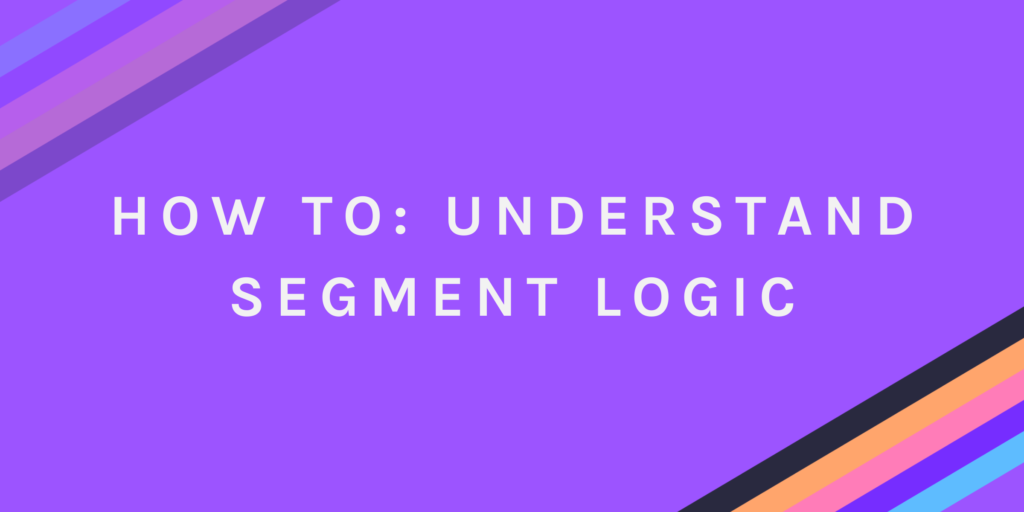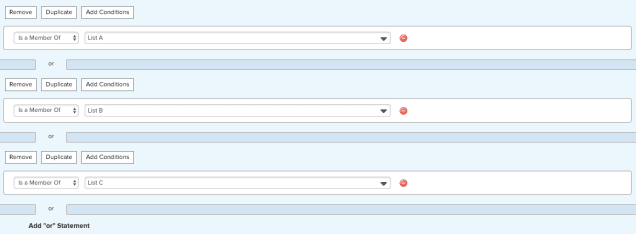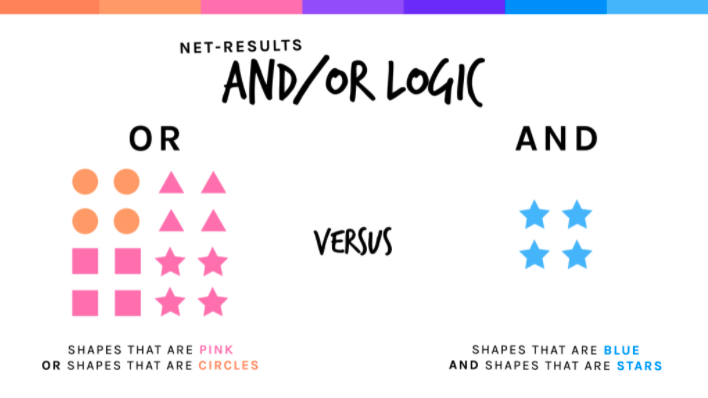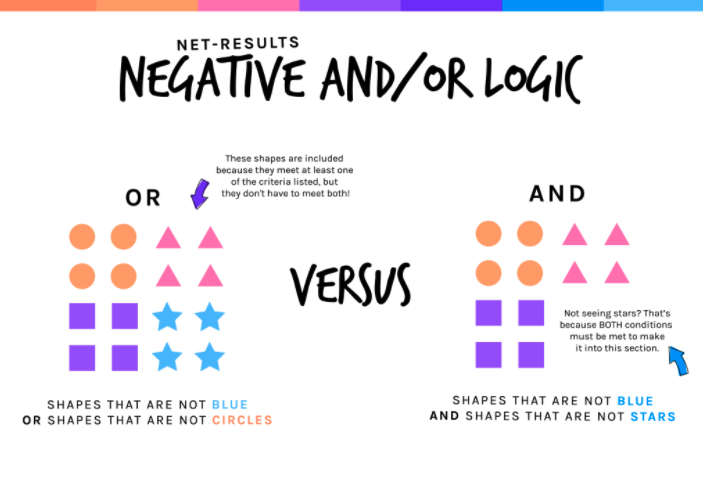Today we’re going to discuss something even I struggle with on a daily basis: segmentation logic.
I don’t know about you, but I’m constantly second-guessing myself when it’s time to build a segment and apply logic — I’ve been doing it for a while now, but no lie, I’m consistently stumped.

So if you’re like me and struggling to comprehend and understand how to apply and implement segment logic in your next marketing campaign, don’t sweat it!
We’re going to discuss how segment logic is used in the Net-Results platform and how it can be used.

NET-RESULTS SEGMENT LOGIC OVERVIEW
First off, it’s important to understand the segment logic being used on the backside of the Net-Results platform. In order to do so, we first have to understand the concept of “Boolean Logic.”
I hope I haven’t sent you into a tizzy just yet! And whatever you do, don’t look this term up on Wikipedia — you’ll be even more confused than you were to start (promise).
To put it plainly, Boolean Logic (according to Google), is, and I quote:
“A very easy way to figure out the truth of an expression using the simple concept of true or false.”
So, to put it in terms that we can all understand, Boolean Logic means you are working with stuff that is either true or false.
Easy enough, right?
Now, if you have worked with segments for a while on the NR platform, you may notice that instead of “true or false,” we have “ANDs and ORs.” Either way, the same logic applies!
This article was very helpful for me as I worked to understand the basic principles and overall concept of Boolean Logic. It’s a fun and short read — check it out!
HOW CAN I USE THIS LOGIC IN MY NET-RESULTS SEGMENTS?
I’m going to use screenshots from the platform to illustrate this, so bear with me…
Let’s say you want to build a segment that includes all contacts from List A, List B, and List C. That segment would look like this:

But the problem here is this segment, with how it’s set up, will only select contacts who are members of List A, List B, AND List C. A contact has to be a member of all three lists in order to qualify for this particular campaign.
In most cases, I can safely assume this is not what you’re looking to do.
So, in order to fix that, you’d want to add an “OR” statement to this segment’s logic which should look like this:

Much better! When we use “OR” statements instead of “ANDs” we end up selecting contacts who are members of List A, B, & C.
Now this is a simple example, but in order to guide you with any further segment logic confusion, I highly recommend these two graphics that have personally helped me decide between an “And” or “Or” statement:


I hope this post has helped you conquer your segment logic woes! I know writing it sure helped me 😂
If you are ever faced with confusion while building out your segments, please don’t hesitate to reach out to our Customer Success team! I’ve been known to reach out to them on a handful of occasions (who’s counting?) and, like always, they’ve knocked it out of the park!
And remember, as a Net-Results customer, you are welcome and encouraged to check out our Knowledge Base in order to tackle more technical problems and find solutions.
You’ve got this!
Cheers to your success,
Lexie Robbins
Digital Marketing Specialist

